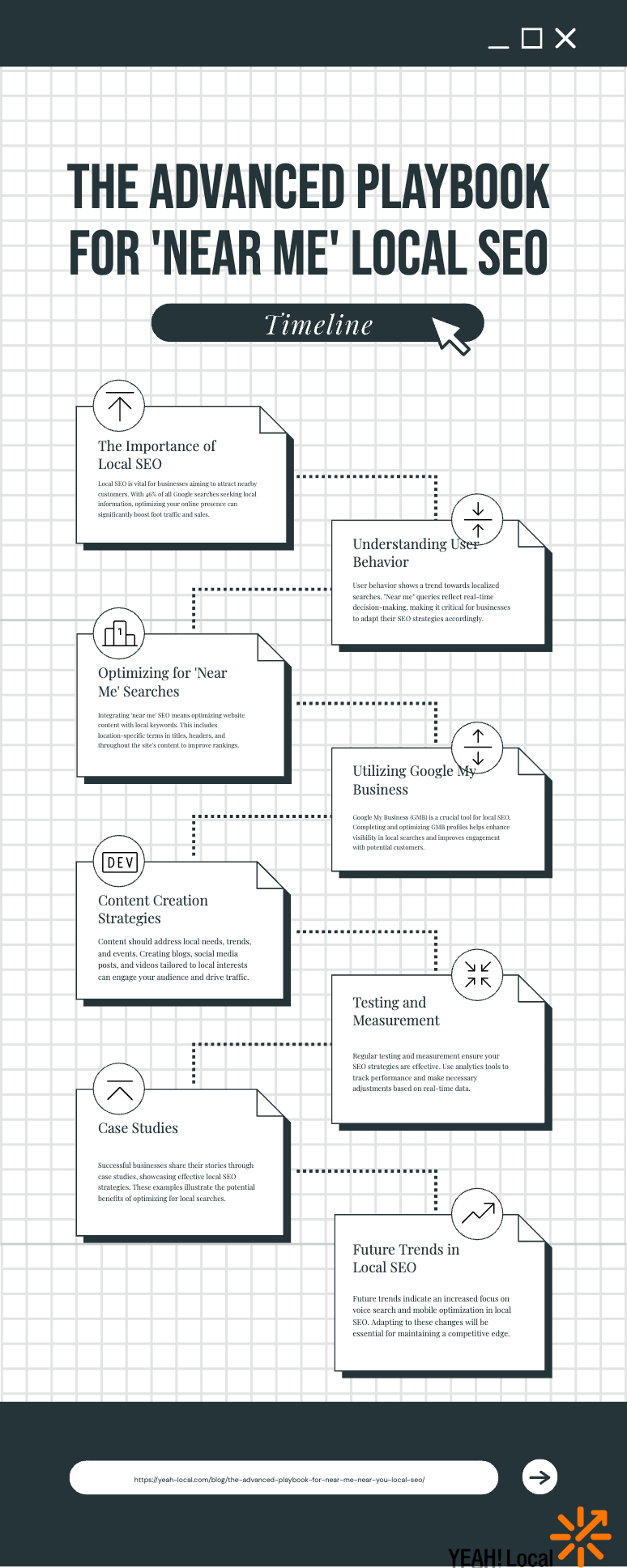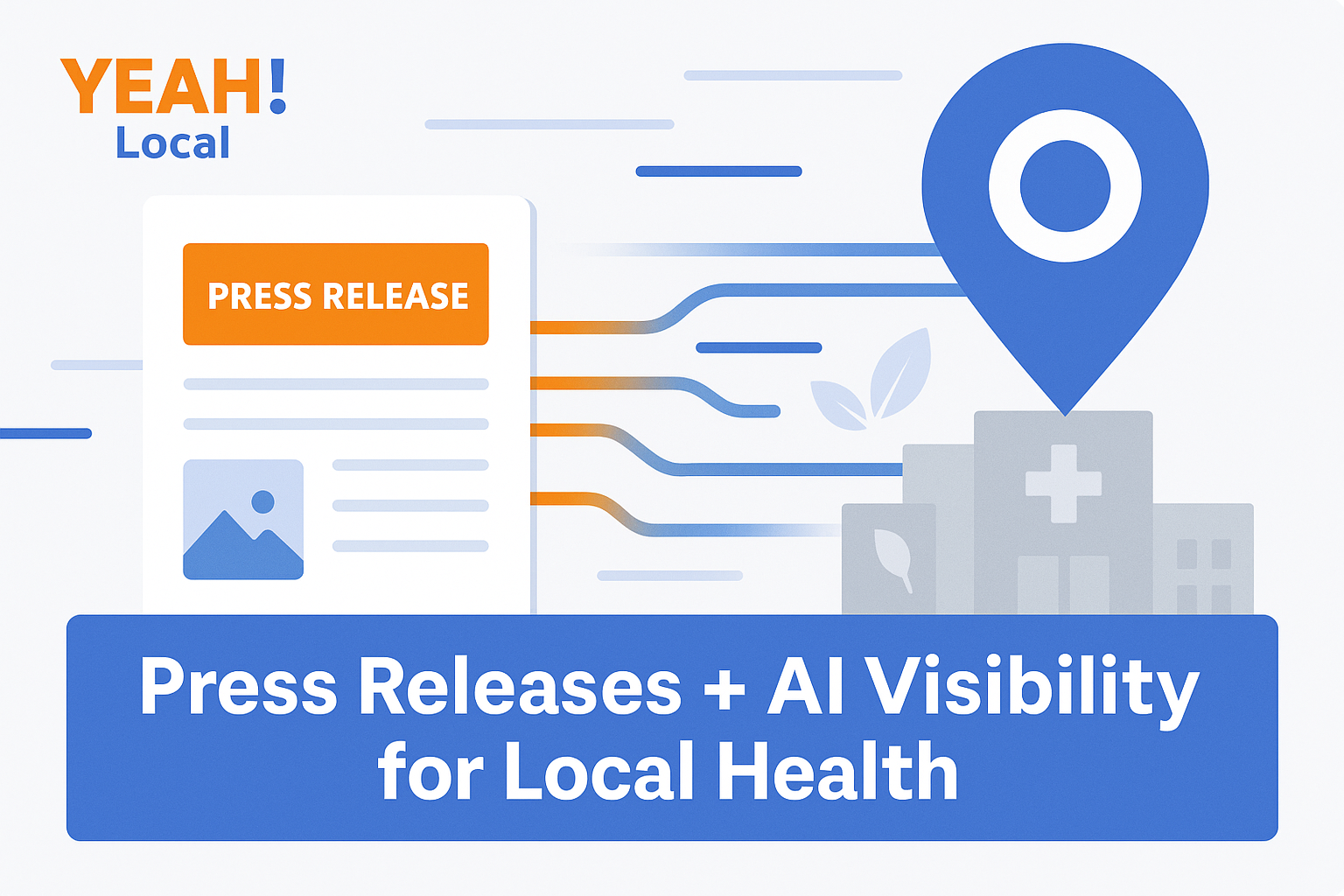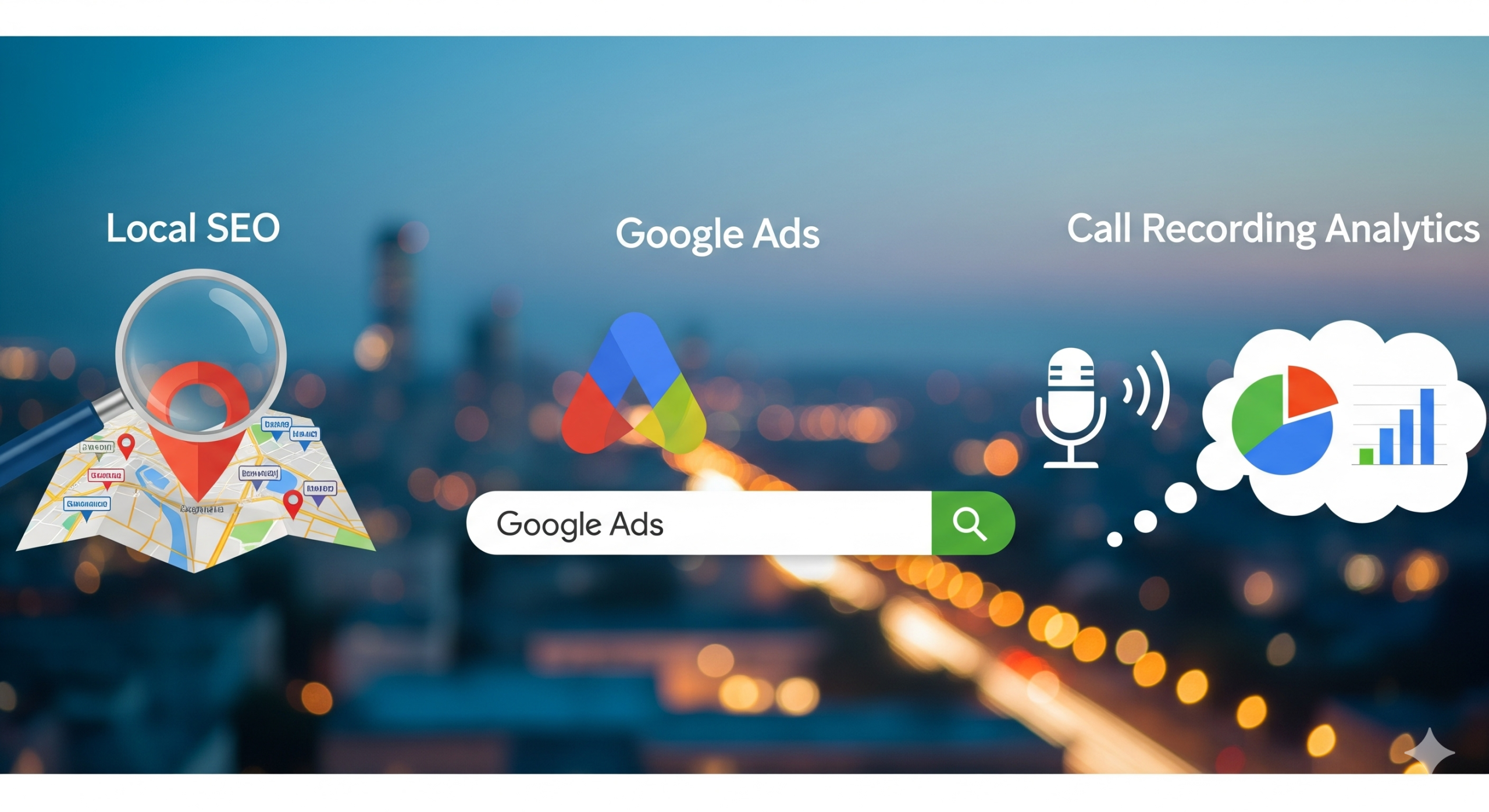“Near me” isn’t a gimmick—it’s a user habit that Google reinforces and businesses profit from when they optimize smartly. Data shows users choose autocomplete suggestions (where “near me” often appears) about a quarter of the time.
Below is a practitioner-level blueprint: the why, the how, rigorous test design, measurement, and production templates—plus a few contrarian moves for competitive moats.
🔑 Key Takeaways: Why “Near Me / Near You” SEO is a Game-Changer
- User Behavior Drives It → ~23% of searchers pick Google’s autocomplete suggestions (like “near me”)—meaning demand is baked in.
- Organic Is the Hidden Battleground → Many SEOs focus only on the Map Pack, but adding “near me/near you” lifts organic rankings and visibility too.
- “Near You” Works Just as Well → If “near me” feels spammy in your copy, “near you” reads natural and performs just as strongly.
- Real Case Studies Show Lift → Property managers, exterminators, and law firms saw more clicks, higher impressions, and better-quality phone calls (calls ≥ 2 minutes).
- Desktop Is Huge → Despite assumptions, many “near me” searches happen on desktop—don’t only optimize mobile.
- Easy Wins Exist → Add “near you” to titles, H1s, alt text, and internal links; track results in Google Search Console and call logs.
- Proven Impact → Early adopters report up to 2× clicks and 5× impressions on optimized pages within a quarter.
Why “Near Me” Still Wins (and Why “Near You” Often Wins Harder)
- User behavior is the engine. Google keeps injecting “near me” into autocomplete; users keep clicking it (~23% of queries use autocomplete). If the suggestion persists, the habit persists.
- Organic is a second battleground. Many teams obsess over the Map Pack and ignore the blue links—handing revenue to competitors who rank in both. Localogy’s analysis + case studies show that “near me/near you” on-page optimizations correlate with more organic real estate and, in some cases, even Map Pack improvements.
- “Near you” reads better. If your brand voice hates “near me,” you can often substitute “near you” with no performance penalty—and better optics. This isn’t theory; it’s what the field data suggests.
- Desktop matters. Contrary to the common belief that “near me” is mostly mobile, Sterling Sky’s testing found a desktop majority for near-me queries in their data sets. Don’t gate your strategy to mobile-only.

What “Great” Implementation Looks Like (Not Spammy, Very Effective)
1) On-Page Templates You Can Ship Today
Titles (keep ~55–60 chars):
- “Emergency Plumber Near You | 24/7 Same-Day Service”
- “Top-Rated Personal Injury Lawyer Near You (Free Consult)”
- “Dermatologist Near You – Same-Week Appointments”
H1 / H2 Patterns:
- H1: “Looking for a [Service] Near You?”
- H2: “Areas We Serve Near You” / “Why We’re the Best [Service] Near You”
Intro copy (80–120 words):
Work the phrase once, naturally, then shift to entities (services, neighborhoods, landmarks) and proof (reviews, awards, wait times, guarantees). Don’t repeat “near you” more than 1–2× per section.
Image alt text & filenames:
alt="emergency drain repair near you – same-day plumber"- Filename:
water-heater-installation-near-you.jpg
Localogy + Sterling Sky both recommend alt, filenames, and anchors as “advanced” passes after titles/H1s.
2) Internal Links with Intent
- Link from your top “money” pages to a location hub with anchors like “find a [service] near you.”
- On location pages, cross-link to priority services (and vice versa). Keep anchors mixed: “near you,” “nearby,” “[service] in [city].”
- Avoid “near me” anchor stuffing—variety is protective and more human. Localogy suggests anchors + images as smart “graduation” steps.
3) Multi-Location Architecture That Scales
- Hub → City → Service-in-City three-tier structure.
- Each City page: “near you” language + neighborhood/landmark entities + embedded map + NAP consistency + primary CTA (call/text/form).
- Service-in-City pages rank for “near me” equivalents when they carry the same on-page patterns and unique proof (local photos, reviews, team).
Sterling Sky’s testing shows the biggest impact in organic (not only 3-pack), which aligns with this architecture.
4) Schema to Reinforce Locality (Without Keyword Jamming)
- Use
LocalBusiness(or the specific subtype), includeaddress,geo,areaServed,hasMap, andsameAs. - Put your canonical phone number in schema and your site; if you use Dynamic Number Insertion for call tracking, keep a visible canonical number on the Contact page and GBP.
- Skip stuffing “near me” in schema properties; it’s not a place for colloquial phrases.
Measurement: How to Prove It Worked (Not Just “Traffic Went Up”)
What to Track (Minimum Viable)
- GSC Regex Filter for Near-Me Intents
- Query filter regex example:
(?i)(near( |%20)?(me|you))|nearby|closest|around me|open now - Track: clicks, impressions, average position for filtered queries over time.
- Query filter regex example:
- Call Tracking With a Quality Threshold
- Count calls ≥ 120 seconds as “likely lead.” (This is the exact threshold used in the case studies reported to Localogy.)
- Form Submissions & Chats with tags noting the landing page.
- Rank Buckets: Measure share of queries in positions 1–3 / 1–10.
How to Test (Reliable Enough for Busy Teams)
Design A: Pre/Post With Synthetic Controls
- Step 1: Choose 2–3 high-traffic, stable pages as controls (no changes).
- Step 2: Apply “near you” optimizations to 2–3 similar pages.
- Step 3: Normalize for seasonality (use YoY or compare to control trend).
- Step 4: Evaluate 12 weeks: look for lift in filtered GSC queries, + lead quality (≥ 2-min calls).
Design B: Alternating Rollout (Staggered)
- Roll changes by city or service in weekly waves; compare first movers vs. later movers.
- Use Cliff-date annotations in GSC/GA4 to mark deployments.
Success Criteria (tight, tangible):
- +30–100% impressions for near-me queries (varies by baseline).
- +15–50% clicks for those queries.
- +10–35% qualified calls (≥ 2 minutes).
These ranges mirror the magnitude and direction reported in multiple Localogy case studies across property management, extermination, and legal.
Field Stories (Composite, but Representative)
Story 1: Property Management Turns the Corner
The owner blocked “near you” since it “looked spammy.” The COO green-lit a single location page pilot. Within weeks, both clicks and quality calls trended up—and leadership flipped from skeptics to evangelists. Timing aligned with a late-year (Q4) rollout, so they also measured against prior Q4 to isolate seasonality. This mirrors the narrative and outcome patterns reported by Localogy.
Story 2: Exterminator Ties It to the Phone
A home-services brand added “near you” to location pages, then linked GBP to those pages. With 2-minute call filtering, the queries that triggered calls were disproportionately near-me flavored, validating on-page changes (and hinting at some Map Pack lift).
Story 3: Personal Injury Lawyer Grabs the Top Row
A PI firm added “near you” to titles, headers, and hero copy across core practice pages. Result: movement into positions 1–3 for head-term variants and a visible ramp in impressions/clicks quarter-over-quarter (Q1’25 vs Q1’24). A second firm saw ~2× clicks and ~5× impressions for near-me queries early 2025 vs. 2024.
Advanced Tactics Most Teams Skip
- SERP-Aligned Copy: Mirror query modifiers users already see in suggestions: “best,” “open now,” “24/7,” “same-day,” “walk-in,” “(insurance accepted)”—but only where true.
- Neighborhood & Landmark Entities: Include the names locals actually use (districts, intersections, transit stops, parks). This strengthens topical and geographic relevance without repeating “near you.”
- FAQ Blocks for Intent Variants:
- “How fast can I book a [service] near me?”
- “Do you serve [Neighborhood]?”
- “Is [service] available near me on weekends?”
- Conversion Friction Killers: Show distance (“~1.2 miles from Midtown”), next available slot, parking notes, and text-us CTA. Near-me is an urgency query—match the intent.
- “Open Now” Logic: If you can show current availability windows, do it. It satisfies users who literally typed “open now near me.”
- Photography That Proves You’re Local: Signage, storefronts, trucks, staff at recognizable locations—then use alt/filenames as above.
- GBP Landing Page Strategy: Link each GBP location to a location page that carries “near you” signals + unique proof. Localogy’s exterminator example hints at Map Pack impact when the landing page is dialed.
Contrarian (But Smart) Plays
- Use “near you” in Headlines, Not Just Titles. Many competitors will only touch the title tag. Put it in H1/H2 + hero copy once and win on semantic proximity and UX.
- Desktop Experience Priority. Since a large chunk of near-me demand comes from desktop for many categories, ensure desktop CTAs are as obvious as mobile (sticky header phone, “book now,” or “text us”).
- Bid on “Near Me” in Paid, But… Let paid validate which near-me modifiers (“open now,” “best,” “same-day”) convert, then roll winners into organic copy.
- Programmatic at Guardrails: If you operate 50+ locations, generate starter city/service pages with carefully curated variable blocks (not pure templating).
Quick-Start Checklist (Ship in 60–90 Minutes)
- Add “near you” to title + H1 on one high-intent page.
- Add one “near you” sentence to the hero paragraph (natural language only).
- Add 2–3 internal links using varied anchors (“near you,” “nearby,” “[service] in [city]”).
- Update 2 images: alt and filename with one near-you variant.
- In GSC, create a saved query filter for near-me regex.
- In your call-tracking tool, mark calls ≥ 120s as leads; annotate today’s date.
- Recheck in 4–6 weeks; if positive, scale.
Why This Works (The First Principles)
- Autocomplete drives phrasing; users adopt it; businesses that reflect that phrasing get matched more often.
- Google doesn’t “always” connect proximity dots for organic—so adding explicit location-seeking phrasing helps the retrieval step.
- Evidence from multiple verticals (property management, extermination, legal) shows meaningful gains in near-me visibility and qualified calls after implementation.
- Independent testing (Sterling Sky) reinforces the directional impact and highlights desktop weight + greater effects in organic than 3-pack.
FAQs
Isn’t this “keyword stuffing”?
Not if you use it sparingly and naturally in titles/headers/intros. You’re aligning with user intent, not repeating a phrase 15 times.
Will this alone make me rank #1?
No single tactic is a silver bullet. But as a multiplier layered on top of strong local fundamentals (GBP, NAP, reviews, speed, EEAT-y content), it’s one of the highest-leverage edits you can make.
What if leadership hates “near me” in copy?
Use “near you”—field data suggests similar outcomes and better brand feel.




